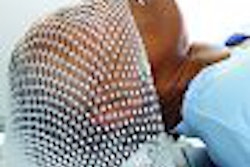
The idea for the novel laser-based therapy was dreamt up by physicist Kong-Thon Tsen, Ph.D., during a stroll through the park with his son, a pathology student at Johns Hopkins University in Baltimore.
"I know quite a lot about lasers, and (my son) knows quite a bit about pathogens. We just talked about our knowledge whilst we were walking and came up with this idea," said Tsen, who is a professor in the department of physics at Arizona State University in Tempe.
The potential therapy of lasers is based on an effect known as impulsive stimulated Raman scattering (ISRS). This effect is exploited in solid state physics to excite acoustic phonons. So the question was posed: What would happen if viruses and harmful bacteria were excited in the same manner by a pulsed laser? Could the unwanted micro-organisms be forced to shake themselves to pieces? Most importantly, could this be achieved without harming useful cells?
The hypothesis was tested in a series of experiments using a femtosecond laser operating at 850 nanometers (nm). This choice of wavelength ensured that energy could be delivered efficiently to the targets (Journal of Physics: Condensed Matter, November 2007, Vol. 19:47, pp. 2-7).
"Most pathogens or micro-organisms coexist with water, so you have to use an excitation source that is transparent to water. That is why we chose a near-infrared laser," Tsen explained.
Samples of E. coli bacteria cells, tobacco mosaic virus (TMV) cells, human cells, and a simple virus that infects bacteria (M13) were irradiated in solution. Above certain laser power densities, the vibrations caused by ISRS rendered the biological matter inactive, as had been hoped.
The mammalian cells were found to survive at higher power densities than the pathogens. This difference was particularly marked when comparing human cells and viruses, with a threshold power density for inactivation of 22,000 mW/cm² for human cells, compared with 60 mW/cm² for M13, 250 mW/cm² for TMV, and 900 mW/cm² for E. coli. So by selecting the laser power density appropriately, undesirable micro-organisms could be critically damaged and healthy cells left intact.
Why the different types of biological matter became inactive at such different power densities is yet unclear. Variations in the structural composition of the samples' protein coatings are believed to be significant. Damping from surrounding water molecules, which will be greater for larger micro-organisms and cells, has also been highlighted as a possible reason.
Tsen said he is confident that the procedure is irreversible. Atomic-force microscopy images of a pathogenic sample before laser treatment and a few weeks afterward revealed that the micro-organism's structure had broken down completely.
Bench-top tests to assess the technique's viability as a practical medical tool are now in progress. One application under consideration is the disinfection of donated blood.
"It is very important to inactivate the known pathogens and the emerging pathogens that are present in blood stored in blood banks. I think our technique will be able to do that in the very near future," Tsen said.
Team members are also investigating whether the laser-based method could be used to inactivate blood-borne viruses such as hepatitis and AIDS. Tsen envisages using a procedure similar to kidney dialysis to treat the infected blood. The method would remain applicable whether or not the infecting virus had become drug-resistant, and would not cause cytotoxic side effects.
"This would greatly reduce the patient's viral load. With the help of their immune system, they would then have a better chance of recovery," Tsen said. "We are challenging ourselves because there is a real need here. Every moment people are dying of AIDS and there is no cure. This could make a tremendous contribution to society."
By Paula Gould
Medicalphysicsweb contributing editor
February 11, 2008
Related Reading
Lung function guides IMRT planning, October 24, 2007
Medical 'brain drain' hindering AIDS battle, July 24, 2007
Several factors contribute to bone loss in HIV-infected women, June 22, 2007
© IOP Publishing Limited. Republished with permission from medicalphysicsweb, a community Web site covering fundamental research and emerging technologies in medical imaging and radiation therapy.


















